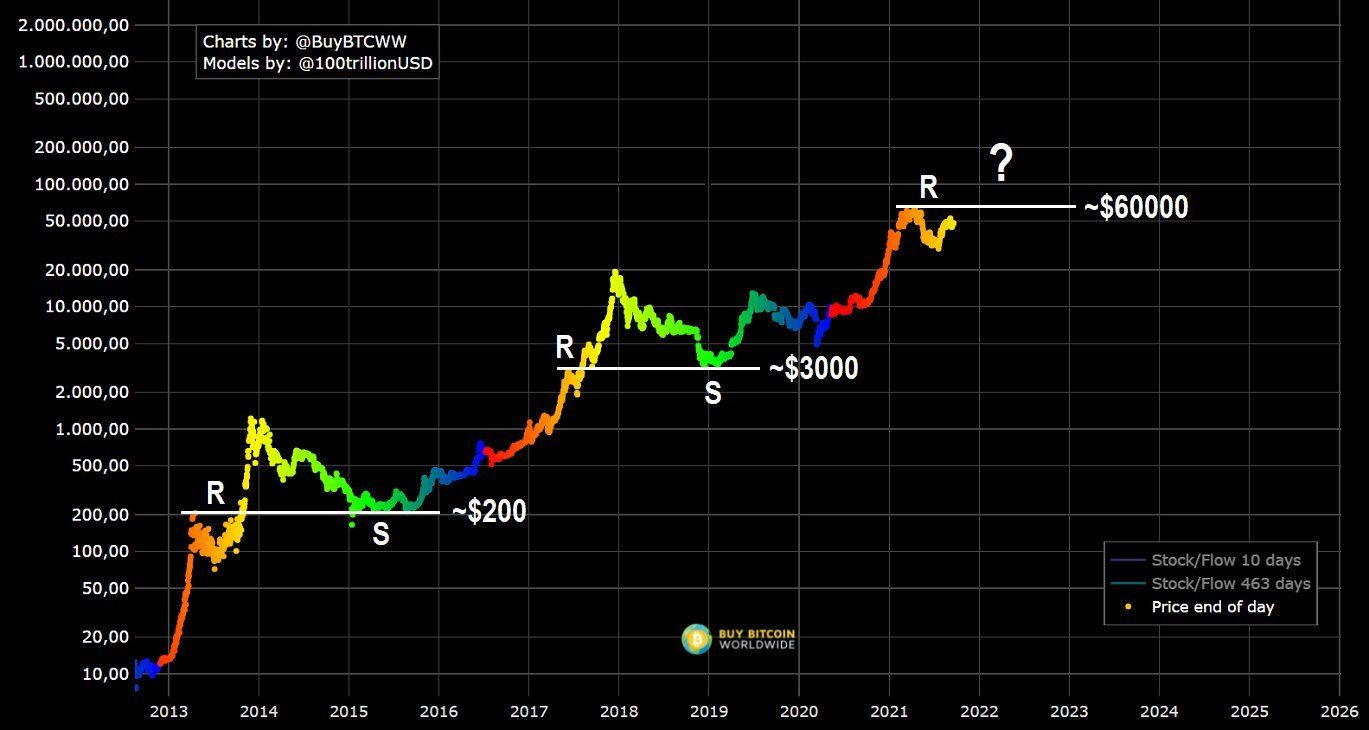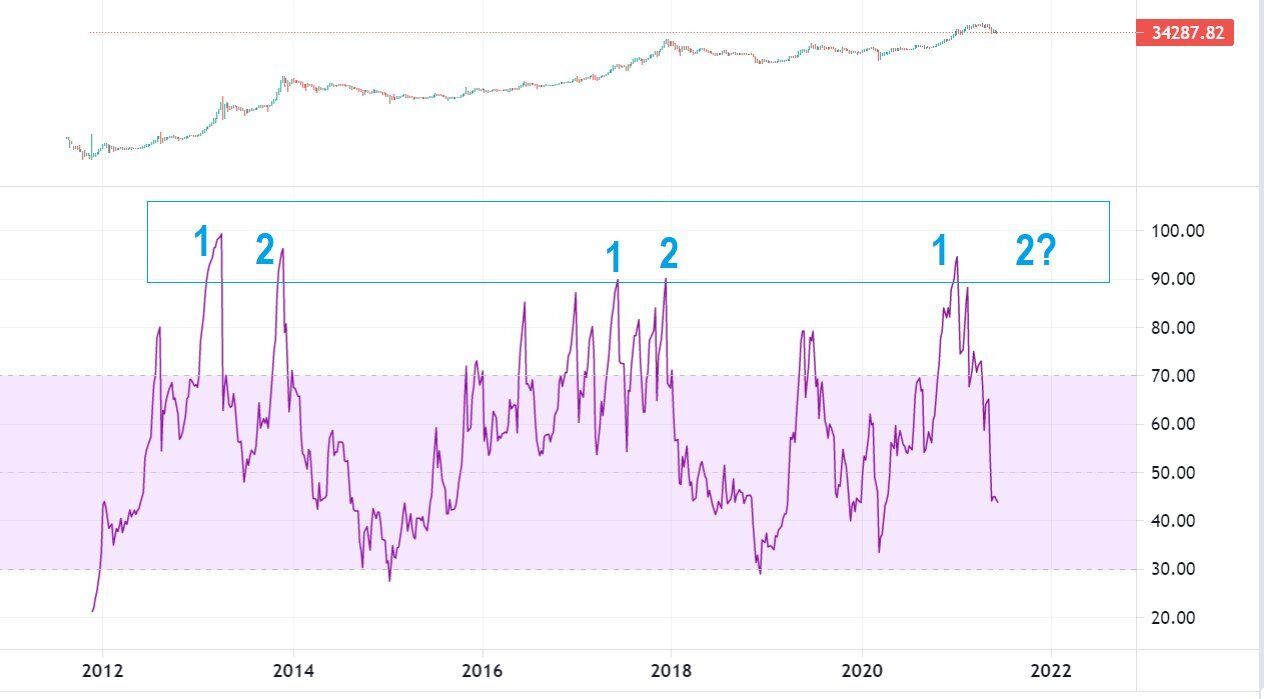The long-term chart of Bitcoin (BTC) contains a fractal, the repeat of which could take the price to the $250-350k range as late as 2021. A break through the resistance area near $60,000 could initiate a parabolic rise, similar to the end of the 2013 and 2017 markets.
What is a fractal?
Fractals are geometrical structures whose equivalents we find in nature. In simple terms, we can say that they are self-similar structures whose parts look like the whole. Natural examples of fractals are a tree, the shell of a snail, rock formations or a cauliflower. Mathematical ones are, for example, the Mandelbrot Set or the Menger Dice.
SponsoredFractals can also be useful indicators in technical analysis for effective trading. By fractals, we mean fragments of an asset’s chart, the structure of which is repeated in different periods. Thanks to the self-similarity of such fragments, an attempt can be made to predict the future behavior of price or its indicators.
Probably the best known trading example is the Fractal Indicator by Bill Williams. This indicator is helpful in locating peaks and lows, which help determine resistance and support levels on the price chart of an asset.
Long-term fractal for BTC
Bitcoin’s long-term chart is the subject of many fractal analyzes, as its self-similarity appears to be derived from 4-year halving cycles. According to the chart published yesterday, the price of BTC has the potential to reach the $250-350k range by the end of 2021.
Cryptocurrency analyst @bitharington tweeted a simple chart of Bitcoin in which a single, recurring line of resistance (S, support) and support (R, resistance) appears. The first time this line appeared was around $200 in the 2012-2015 cycle, and then we see it around $3,000 in the 2016-2019 cycle. Today, the analyst suggests that the same resistance/support line is present around $60,000.

In the previous two cycles, breaking through this resistance line led to a 6x increase on the BTC price. In his opinion, breaking through this resistance in the current cycle could lead the price to the $250-350k range later in 2021. He says this because in the previous two cycles, breaking through the resistance line led to rapid parabolic increases.
The double peak took place in 2017
The hypothesis of analyst @bitharinton is based on several premises. One of them is the claim that the 4-year halving cycles are still in force and Bitcoin will behave similarly to previous years. This premise is uncertain, however, as there is evidence in favor of lengthening crypto market cycles as adoption continues and the reward for mining BTC becomes less important.
Another premise is the fractal structure itself, which implies a double peak in each cycle. While this structure was fairly obvious in the 2013-2014 bull market, the 2016-2017 rally was more regular. The chart does not suggest a clear first peak in the accelerating bull market.
Despite this, the analyst claims in a comment under his tweet that there was indeed a double peak in 2017. Although it is not clearly visible on the price chart, he believes it is perfectly illustrated by the weekly RSI (Relative Strength Index) chart.

Indeed, the first peak in the previous cycle’s bull market, in which the RSI reached the 90 level, coincides with the marked $3000 level. And if so, the bull market of 2016-2017 may also have fulfilled the double top fractal.
A closer look at the fractal
Interestingly, yesterday’s tweet by another cryptocurrency market analyst seems to confirm the fractal analogies from 3 periods of Bitcoin’s history. @TechDev_52 pieced together the structure of BTC price action that took place around the middle of the previous 2 bull market. In total, he analyzed 3 periods of BTC correction – including the current one – whose similarity suggests a fractal structure.

On each chart, we notice:
Sponsored Sponsored- A decline in the BTC price combined with a downtrend on the RSI (green line).
- A macro bottom in the market combined with a breakout from the downtrend on the RSI (red circle).
- Consolidation of the price after the breakout and consolidation of the RSI (yellow).
- Continuation of the bull market (blue arrow).
An additional confluence on these fractals is the 1.272 Fib external retracement level on a logarithmic scale. This is the area measured for the entire bear market that preceded each bull market. In all three cases, it seemed to provide support and mark a macro bottom in the BTC market.
Conclusion
Fractal analysis is just one of the tools used in technical analysis. Taken in isolation from other macro market indicators, it provides an interesting geometric exercise, but cannot serve as a sufficient argument for investment decisions or price predictions.
Nevertheless, if the cyclical nature of the cryptocurrency market remained intact, then the fractal self-similarity of the long-term BTC chart may be relevant. If so, there is a chance for a continuation of the bull market in this cycle and the realization of the double peak scenario.
Admittedly, the $250-350k range sounds ultra-optimistic at this point. However, Bitcoin likes to surprise with volatility – both positively and negatively.
What do you think about this subject? Write to us and tell us!


